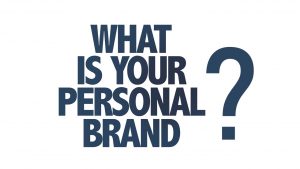Shift your Service from Processed to Personalized
 It stands to reason that being a Trusted Advisor requires understanding customer and co-worker needs. The challenge is we may have plenty of knowledge, yet ironically have little impact. It happens when we quickly assess in our own minds the customer's problem, then go straight to offering a solution. Simply being quiet and offering a solution doesn't confirm that you really understand them. You'll have more impact when you prove you understand their needs by stating, "It sounds like..." Then summarize your understanding of their needs. If you merely listen to a customer and offer a solution, the customer feels PROCESSED. If on the other hand, you listen and verify your understanding of their needs, then move to solution, your service now feels PERSONALIZED.
It stands to reason that being a Trusted Advisor requires understanding customer and co-worker needs. The challenge is we may have plenty of knowledge, yet ironically have little impact. It happens when we quickly assess in our own minds the customer's problem, then go straight to offering a solution. Simply being quiet and offering a solution doesn't confirm that you really understand them. You'll have more impact when you prove you understand their needs by stating, "It sounds like..." Then summarize your understanding of their needs. If you merely listen to a customer and offer a solution, the customer feels PROCESSED. If on the other hand, you listen and verify your understanding of their needs, then move to solution, your service now feels PERSONALIZED.
Was this helpful? For additional information on this topic: Influence and Persuasion Skills
You’ll find more of Jeff’s Trusted Advisor Customer Service tips or subscribe to receive a new Business Building Tip every two weeks.
Curious about Jeff’s training resources? Click on Shop for details. If you’re interested in a customized presentation for your organization, contact Jeff at [email protected]
Jeff Mowatt is a customer service speaker, customer service training professional, award-winning speaker, and best-selling author.
How to Create More Consistent Service
 Ignore this tip if you manage a multibillion dollar brand like Apple, Coke, or McDonalds. Those companies are so established that customers have an emotional attachment to the brand name itself. If on the other hand, you manage a smaller organization, then chances are your customers have little attachment to your company name. Instead, they associate your brand with individual employees with whom they interact. That means you can spend money on marketing, product development, facilities, distribution etc, but if your customer interacts with just one employee who is having a bad day, or who isn't fully trained on how to interact with stressed or rushed customers - then your entire brand (and all those other investments) takes the hit.
Ignore this tip if you manage a multibillion dollar brand like Apple, Coke, or McDonalds. Those companies are so established that customers have an emotional attachment to the brand name itself. If on the other hand, you manage a smaller organization, then chances are your customers have little attachment to your company name. Instead, they associate your brand with individual employees with whom they interact. That means you can spend money on marketing, product development, facilities, distribution etc, but if your customer interacts with just one employee who is having a bad day, or who isn't fully trained on how to interact with stressed or rushed customers - then your entire brand (and all those other investments) takes the hit.
The only way to ensure all employees deliver consistent high quality service is through proper training. That's a major challenge for companies who have high turnover or seasonal staffing issues. That's why it makes sense to work with a training provider who offers the option of supplying a videographer to film the training to use as an orientation for future new hires. Bottom line - consistent service doesn't happen by accident. If service isn't consistent, don't blame employees. Blame the manager who allocates resources to other corporate priorities; while neglecting training.
Personal Brand Quiz – Test how your personal reputation stacks up
 In marketing terms, your company’s Net Promoter Score indicates your customers’ willingness to recommend your products and services. Bringing this concept closer to home, ever wondered how likely people are to recommend you personally? For example, would your supervisor go to bat for you to support you receiving a pay raise? Are your competitors hearing about you from your customers and considering offering you a job? The likelihood of these kinds of recommendations is based on what I call your Trust Equity Score. The higher your trust equity, the more inclined people will be to recommend you to others, and be willing to pay a premium - literally - to do business with you. Take this quiz to discover your score out of 45 possible points…
In marketing terms, your company’s Net Promoter Score indicates your customers’ willingness to recommend your products and services. Bringing this concept closer to home, ever wondered how likely people are to recommend you personally? For example, would your supervisor go to bat for you to support you receiving a pay raise? Are your competitors hearing about you from your customers and considering offering you a job? The likelihood of these kinds of recommendations is based on what I call your Trust Equity Score. The higher your trust equity, the more inclined people will be to recommend you to others, and be willing to pay a premium - literally - to do business with you. Take this quiz to discover your score out of 45 possible points…
Do you keep your promises?
Subtract 5 points if you occasionally use these phrases: I’ll try, I’ll do my best, I won’t be able to do it until tomorrow. Add 10 points if instead you often say, You’ll have it within 24 hours (and consistently deliver on that promise). It’s specific and positive, and when conveyed in precise hours, rather than in a day, it sounds shorter and more intentional. Tip – when you do deliver within 24 hours start your communication with, “As promised…” That way, it actually registers with others that you keep your word.
Do coworkers and customers see you as their friend or trusted advisor?
Give yourself a zero if most people at work see you as a friend. Add 5 points if they would describe you as a trusted advisor. Keep my little rhyme in mind: Friends compare and overshare. Advisors ask and stay on task. It’s a reminder to talk less and listen more. Focus the conversation on the other person and what their overall objectives are and why. People value the input of a strong listener over that of a smooth talker.
Do you look like a professional?
If you are often dressed and groomed more casually than your peers, and are in worse physical shape, subtract 5 points. If you are dressed and groomed slightly sharper than your peers, and are in better shape, add 5 points. In the real world whether it’s fair or not, people judge you by outward appearances. It’s a reflection of your self-esteem, self-discipline, and attention to detail. It should look like you put some effort (including exercising) into your appearance.
Are you involved in your profession?
Subtract 5 points if you are not a member of your professional/ industry/ trade association and never go to meetings. If you are a member and attend meetings add 5 points. If you also volunteer and serve in some capacity in your association, add 5 more points. Professional/trade associations give you the opportunity to network with peers in your industry. You learn from competitors who are actually willing to share. And you have the opportunity to give back while raising your profile. Do your personal brand a favour – pay your dues and get involved.
Do you ask for permission or forgiveness?
If you have a tendency to check with others before taking action, subtract 5 points. If you’re more inclined to adhere to the adage that, it’s easier to ask for forgiveness than permission, add 5 points. Whatever your job title may be, people have more respect for those who are inclined to take action than those who wait to be told or given permission. If your organization penalizes people who take initiative, find someplace else to work.
Where are you when the chips are down?
When it comes to visiting people in hospitals, attending funerals, or dealing with upset customers, you tend to either: a) find an excuse to be somewhere else (subtract 5 points). Or b) show up even though you don’t want to be there (add 10 points). No one likes hospitals, funerals, or dealing with upset customers. That’s why when times are tough, people do notice who shows up. And yes they also notice those who don’t. There’s always an excuse for avoiding unpleasant situations, which is why showing up like a grown-up does so much for your reputation.
Your score out of 45?
Chances are if you took this quiz you probably scored pretty high. The fact that you’re reading this article indicates you are interested in learning and development: a strong trait. Increasing your trust equity and enhancing the value of your personal brand is simple – just take the steps outlined. Of course simple doesn’t mean easy. Trust-worthiness is after all, something we all have to earn.
A Simple Sentence to Increase Referrals
 Ignore this tip if you work for a monopoly. If however, your customers do have options to do business elsewhere, consider this. If your employees were able to generate more referrals by saying one sentence more often, imagine the impact to your bottom line. Keep in mind this money making strategy costs you nothing, reduces the need to discount your prices to gain new business, and strengthens the loyalty of your current customers.
Ignore this tip if you work for a monopoly. If however, your customers do have options to do business elsewhere, consider this. If your employees were able to generate more referrals by saying one sentence more often, imagine the impact to your bottom line. Keep in mind this money making strategy costs you nothing, reduces the need to discount your prices to gain new business, and strengthens the loyalty of your current customers.
I learned this technique from Corinne Lyall, Broker/Owner of Royal LePage Benchmark with over 150 associates. She's also served as President of the Calgary Real Estate Board. She's so sharp I asked her to be one of our panelists at the Customer Service Leadership Summit. Her tip for asking for and getting referrals is this... After you've provided exceptional service, the customer will usually thank you. The typical response to being thanked is, "You're welcome." In this case however, instead say to the customer, "The best thanks you can give me is to pass my name to other people who are just like you, because I LOVED working with you!" It tells customers (without being pushy) that you want them to recommend you, and who they should recommend you to, while simultaneously complimenting the customer. Not bad results for a simple sentence.
Tips for Taming Trolls and Calming Upset Customers
 FAQS on how to deal with angry customers
FAQS on how to deal with angry customers
Dealing with upset customers is like feeding bears. Most will be happy you’re there, but a few will get really ugly if you don’t give them what they want. When things go wrong, how well is your team equipped? Having trained customer service teams for over 25 years – particularly those dealing with customers who are frustrated or stressed – I’ve put together this list of frequently asked questions about how to deal with internet trolls and regain lost trust with upset customers.
How should you respond to internet trolls and customers who post rude or unfair comments?
First gather the facts to determine whether this is an actual customer expressing a legitimate concern, or just an internet troll trying to provoke a response. In the case of a troll comment like, “This place is horrible” (with no details), don’t reply. The sooner that negative post is buried by overwhelmingly positive customer comments the better. When you do receive unflattering comments from actual customers, first try to contact them by phone to resolve the matter offline. If that’s not possible, then when replying in writing, stick to facts (not opinions), and remain professional and reasoned – not emotional. If there was indeed an error on your team’s part, apologize for the hassle and offer a remedy. Mention the steps you’ll take to ensure it doesn’t happen again. Express your appreciation for the customer bringing it to your attention.
How do you deal with a customer who’s swearing at you on the phone?
Say this: “I want to help you. Using that language is preventing me from focusing on resolving this for you, so I’m going to ask you to talk with me without using that language.” If they continue the profanity then say, “As I said before, I want to help you. However, I’m not going to do so when you’re using that language, so I’m going to hang up. Please call back when you’re ready to talk about this without that language. Good bye.” Then tell your supervisor about the conversation so they’ll be forewarned when the customer calls back demanding to speak to a manager.
What’s the fastest way to get an angry customer to calm down?
Listen without interrupting. After they finish venting, your first words should be, “That sounds frustrating.” Consider how this misstep may be affecting the customer and let them know that you get it. Take ownership and apologize for any shortfall or misunderstanding.
Why are customers ruder on the phone than in person?
Anonymity. Like road raging drivers in cars, people phoning in think they won’t be recognized. That’s why it’s important to begin the phone conversation by introducing yourself with your first and last name. Then immediately ask them for their name. The quicker they identify themselves the less likely they’ll become abusive.
What are other strategies for dealing with upset customers?
Tone it down – literally. By slowing your rate of speech and slightly lowering your voice tone, you sound less emotional and more rational. Speaking of speaking, don’t dumb down your language or over use filler words: kinda, sorta, like, ya know. The more articulate you are, the more intelligent you’ll be perceived to be, and the more respect you garner.
How can I get my staff to really care about unhappy customers?
Begin by hiring people who have some history in caring for others. Check if they volunteered or played on sports teams; indicating they’ve learned to work with others, and it isn’t always about them. Then provide them with proper customer communication training. Fortunately, employees don’t have to become proverbial bleeding hearts to effectively resolve customer concerns. They do however, need to learn techniques to put customers’ minds at ease. Contrast for example, when an untrained employee says, “I’ll deal with it,” versus, after we train them, employees instead say, “I’ll take care of it for you.” By simply changing a few words, service providers create better feelings for everyone.
Bottom line – by equipping employees with the proper customer service training, you end up with less staff turnover and fewer social media comments that bruise your brand. Best of all, employees discover that when you learn how to recover trust with unhappy customers, those formerly angry bruins can actually become teddy bears.
What CAN you do?
The CAO of a municipality where I was delivering my Trusted Advisor seminars exclaimed, “Customer service isn’t rocket science. We just need employees to focus less on what they can’t do for customers, and more on what they can do.” Sounds simple doesn’t it? Yet one of the most common frustrations for customers phoning in with a concern is getting the runaround. An employee transfers them to someone who isn’t in, or to the wrong person. Unless the caller asks to speak to a specific person, then before transferring the caller, check to ensure it is indeed the correct person, and he or she is actually available. Five minutes of your time can save hours of a customer waiting and becoming increasingly frustrated. It’s the difference between employees who think their job is transferring calls, versus those who understand what their job really is – taking care of customers.
How Extreme Expressions Affect Trust
 Observing social media feeds, tweets, and posts it sometimes seems the rest of the planet is leading fabulous lives. People post updates on their awesome outings accompanied by selfies showing just how popular and perfect their lives must be. We don't hear about their typical, run of the mill days that the average working person actually lives. One unfortunate result - in an effort to make things seem more interesting - is our tendency towards hyperbole. We describe things in extreme terms: amazing, spectacular, hilarious. As you know, most people; especially customers who are making significant buying decisions, are not fools. They tune us out and become skeptical (often subconsciously) when our word choices exaggerate - another word for lie. Everything you say and do either advances or reduces your customers' sense of trust in you - there is no neutral. To be valued as a Trusted Advisor, remember that less is more. Resist the temptation to overuse extreme expressions.
Observing social media feeds, tweets, and posts it sometimes seems the rest of the planet is leading fabulous lives. People post updates on their awesome outings accompanied by selfies showing just how popular and perfect their lives must be. We don't hear about their typical, run of the mill days that the average working person actually lives. One unfortunate result - in an effort to make things seem more interesting - is our tendency towards hyperbole. We describe things in extreme terms: amazing, spectacular, hilarious. As you know, most people; especially customers who are making significant buying decisions, are not fools. They tune us out and become skeptical (often subconsciously) when our word choices exaggerate - another word for lie. Everything you say and do either advances or reduces your customers' sense of trust in you - there is no neutral. To be valued as a Trusted Advisor, remember that less is more. Resist the temptation to overuse extreme expressions.
Six Everyday Excuses that Bruise your Brand
 Working with organizations for over 25 years to transform customer service culture, I’ve discovered that some employees – who would describe themselves as solid performers – actually have a habit of delivering more excuses than results. Unfortunately, your customers don’t buy excuses – literally. The more your team members rationalize poor service, the more they’ll cost your organization in trust equity. See if your employees use any of these six common customer service excuses. We’ll start with the worst offenders:
Working with organizations for over 25 years to transform customer service culture, I’ve discovered that some employees – who would describe themselves as solid performers – actually have a habit of delivering more excuses than results. Unfortunately, your customers don’t buy excuses – literally. The more your team members rationalize poor service, the more they’ll cost your organization in trust equity. See if your employees use any of these six common customer service excuses. We’ll start with the worst offenders:
1. “It’s against policy”
Customer service policies must make obvious sense to customers. If not, overly restrictive and outdated rules practically invite customers to argue with employees or rant about your brand in social media. Set your policies around what’s best for your brand and best for customer loyalty. Don’t let lawyers establish your customer service policies. If you must have an unpopular policy, ensure that your employees understand it, can get behind it and can easily explain it to customers. More importantly, train and empower frontline employees to overrule policies when common sense dictates.
2. “Our shipping people messed-up”
Customers have zero patience for service providers who blame foul-ups on someone else; be it on co-workers in another department, or external suppliers/contractors who are part of your supply chain. Blaming others makes customers assume that they’ll get the proverbial run-around and intensifies their aggravation, making a bad situation worse. So take the opposite approach – accept responsibility. Say, “Looks like we messed-up. I’m sorry about that.” Most customers realize it wasn’t actually you who made the error. And they’ll respect the fact that you are nonetheless stepping-up to own it.
3. “We’re swamped this time of year”
This excuse is similar to the recorded on-hold phone message you hear from call centers: “Due to high call volumes…” Essentially this excuse tells customers that the organization has experienced this problem repeatedly, but (since they don’t really care that much about customer experience) hasn’t bothered to do anything to fix it. That’s better left unsaid. Best to simply thank the customer for their patience, and get on with what you can do for them.
4. “I’m not authorized to do that”
In my customer service seminars we talk about employee status, and how it’s a mistake to put a customer at a higher or lower status than the service provider. Instead, you want employees to be viewed by customers as their trusted advisors. So when you need to ask higher-ups for input, explain to the customer that you want to look into this further to see what you can come up with. Then discretely discuss the matter with your supervisor. When afterwards you report back to the customer, tell them, “Here’s what I came up with.” That makes customers feel like they’re dealing with an equal; not wasting their time.
5. “I assumed you wanted…”
Customers want service providers to help them make decisions. And in the case where customers view you as their trusted advisor, they even want you to make decisions on their behalf. But that only works when the service provider has discussed the customer’s needs and overall objectives. We earn the right to make assumptions after talking with the customer and gaining their respect. Paraphrase your understanding of their needs with the words like “sounds like”. For example, “Sounds like you’d like to…” After you’ve done that, customers will be much more comfortable and confident with your assumptions.
6. “Sorry, I’m new here”
Actually, in this case customers will accept this excuse, which is why I put it last. Customers can be wonderfully compassionate when a newbie, who realizes something is taking longer than it should, apologizes for the delay and explains the situation. Tip: rather than saying bear with me (which sounds like an order), instead say I appreciate your patience. For example, “Sorry for the delay, this is my first week here. I appreciate your patience with me.” Now the customer feels like a hero for being nice.
Bottom line – in every organization things will occasionally go wrong that put customer relationships at risk. The key to preserving the customer connection is ensuring frontline employees are trained to recover trust. As for managers, revisit your policies to ensure they don’t force employees to automatically say no to customers when instead they should be looking for ways to say yes. After all, if you don’t satisfy that customer, your competitor will. Then you’ll have in bigger problems where excuses won’t matter.
What’s one word for a more positive customer experience?
 (hint - it's not 'yes') If you've attended my Trusted Advisor seminars, you know how by just changing a few words you can improve how others perceive you and your organization. For example, check out this short video where I reveal one word that creates a better experience for employees and customers.
(hint - it's not 'yes') If you've attended my Trusted Advisor seminars, you know how by just changing a few words you can improve how others perceive you and your organization. For example, check out this short video where I reveal one word that creates a better experience for employees and customers.


